Ben Johnson says that his paintings, ‘Celebrate everything that I think is great in architecture and engineering. Not the ego of the architect, but the ambitions of architecture’. Often confused with photorealism, his paintings explore complex perspectives, sometimes constructed from impossible viewpoints and depicting lost buildings. With their crystalline light, carefully chosen framing, and solemn solidity, they show the powerful underlying geometry of the structures Johnson most admires. Devoid of people, but nevertheless commemorating social places, his paintings seem timeless, perfect spaces in the renaissance tradition of the Ideal City. Together they tell a history of architecture from Johnson’s unique viewpoint – a subject he has devoted 50 years to.
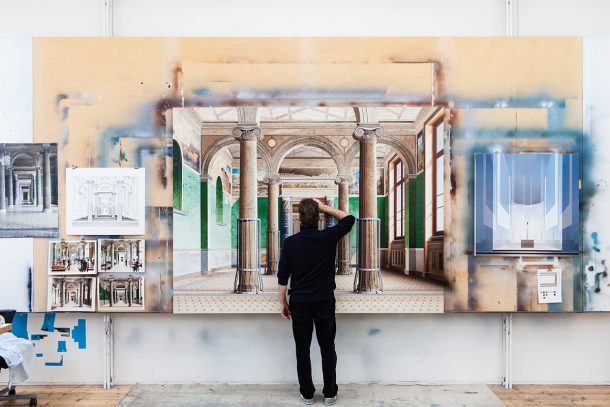
Johnson studied at the Royal College of Art in the 1960s, when it was based at the V&A, and entered the painting studios through the museum. ‘I was overawed by the scale of the museum but also the breadth of the collection,’ he says. ‘This daily exposure to the collection formed the basis of my life’s work. The museum became my tutor. It bought me to a world where architecture collaborated with craftsmanship to transcend the functional and offer the sublime. To this day I still visit it as a constant source of research and inspiration.’ His V&A retrospective, which I’ve curated, will be launched during London Festival of Architecture this June on an innovative digital exhibition platform conceived and designed by Make Architects (the practice founded by Ken Shuttleworth, who previously worked for Norman Foster on the Millennium Bridge, City Hall, and ‘Gherkin’).
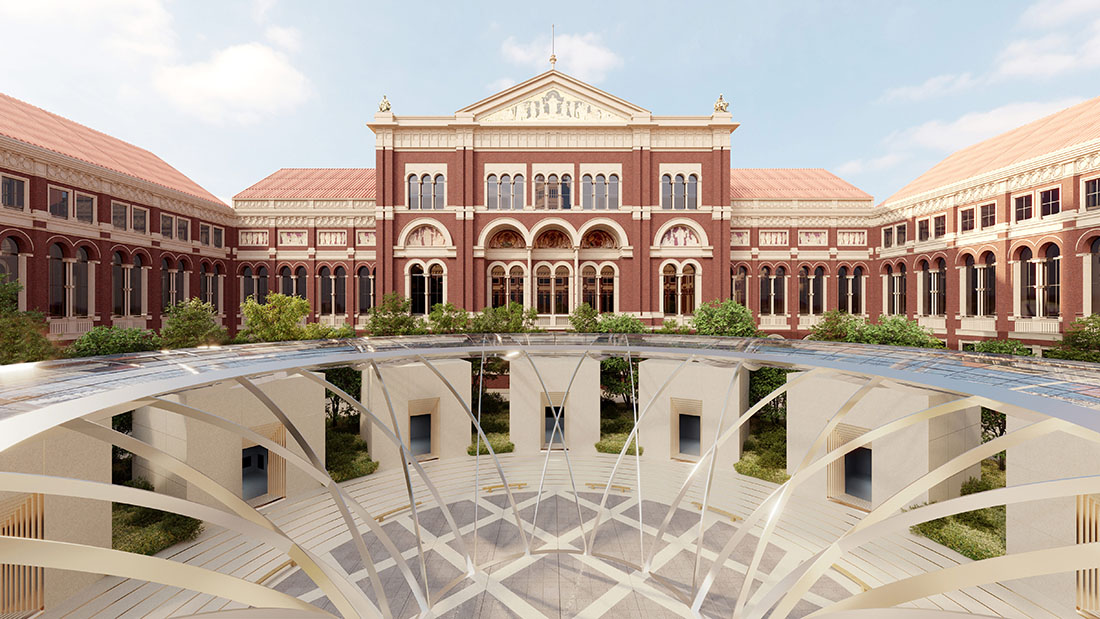
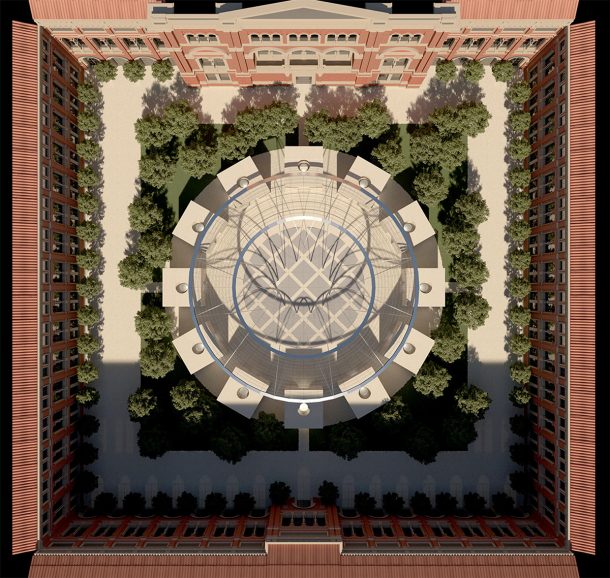
Paintings depicting the Dome of the Rock, Alhambra, Crystal Palace, HSBC Building, and Neues Museum are displayed in a series of 12 pavilions that are placed in a circle in the John Madejski Garden at the heart of a virtual V&A. These works are the result of intense architectural study, built up slowly over many months of observation and drawing, often combined with digital technology. Visitors will be able to learn about the buildings they depict, and the artist’s influences and techniques, in short films by filmmaker Tapio Snellman shot at the museum, as well as behind-the-scenes tours of Johnson’s West London studio. The white walls of this studio, in a complex shared with Peter Blake, are crammed with enormous paintings of iconic architecture, each one of which takes Johnson about a year to complete. Complex drawings and colour studies show the arches and tracery of the work currently on the easel, depicting the nave of Grundtvig’s Church in Copenhagen, an expressionist structure with stepped gables by Peter Vilhelm Jensen-Klint.
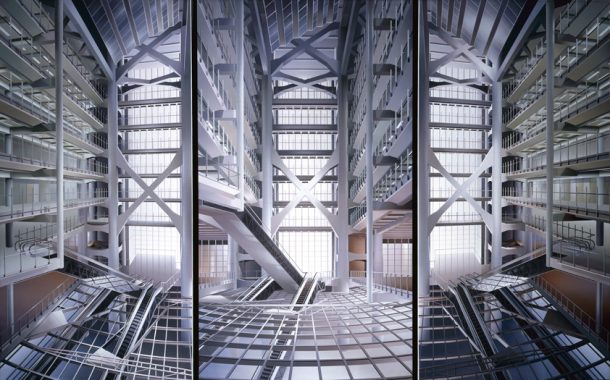
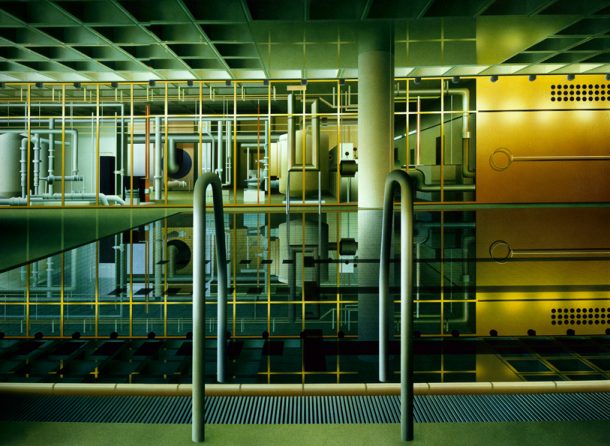
Johnson is most associated with the ‘high-tech’ architecture that emerged in Britain in the 1970s, and integrated new technology and materials into lightweight structures that were designed to be flexible, sustainable, transparent and democratic. His triptych, Three Moments of Illumination (1998), finds something almost spiritual in Norman Foster’s HSBC building in Hong Kong, with its mirrored louvers, designed to throw the changing light into the offices located off the towering atrium. His portrait of the Willis Faber building in Ipswich (1984), full of glamour and geometry, shows the ground floor swimming pool and boiler room that Foster designed for the office block, where he experimented with open plan and green roofs, and the blurring of work and leisure. At Richard Rogers’ Inmos Microprocessor Factory in Wales (1985), Johnson found the architect’s generous vision of an interior social street cluttered and compromised and obtained the original drawings, creating a painting that reversed these alterations. The HSBC reflectors have ceased to be used, and the Willis pool has now been covered over, but Johnson’s paintings remain as records, he says, of the ‘perfect spaces’ the architects intended.
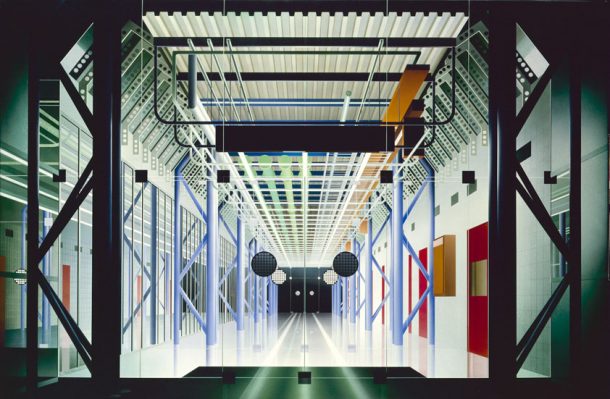
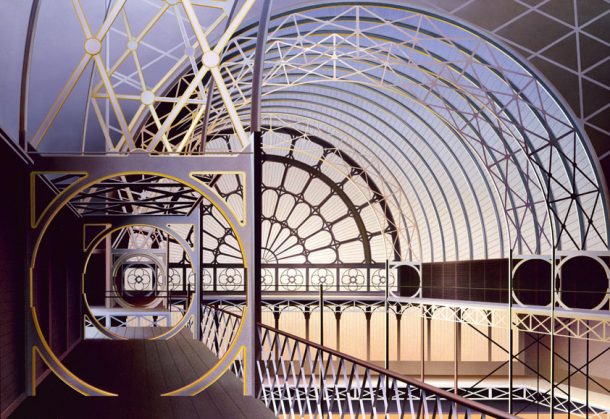
In the 1980s, Johnson, then teaching at Central St. Martins, was also a post-graduate student on the first computer graphics course in Britain. His paintings are composed from numerous drawings that mix traditional methods with digital technology, and therefore lend themselves well to virtual display. Crystal Palace Reconstruction II (1986), for example, uses new technology and original engineering drawings to recreate Joseph Paxton’s lost building, the birthplace of modern architecture and one of the inspirations for ‘high-tech’, the sunset outside hinting at the fire to come. Johnson’s works are intended as celebrations of structure, but also objects of meditation, the single point perspective capturing what the artist calls the ‘magnetic’ moment in a building, the place where you take it in as a powerful image and are touched emotionally. In Queen’s House Greenwich II (1978), with its checkerboard floor and Vermeer-like hidden light, Johnson hoped to capture ‘something powerful going on in the geometry’, haunting effects that he links to Inigo Jones’ occult preoccupations, as seen in his study of Stonehenge.
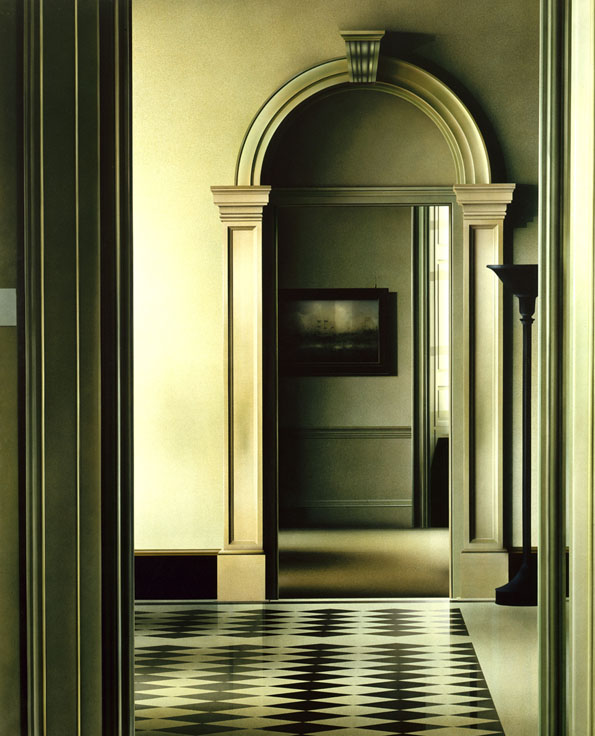
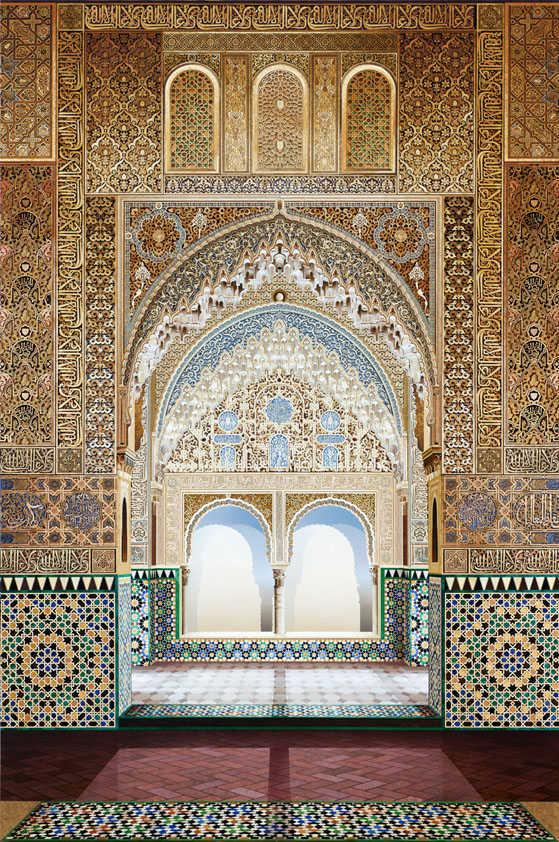
Many of Johnson’s paintings, such as his studies of the Dome of the Rock in Jerusalem (2017) and Alhambra in Granada (2013), explore the intricate and complex patterns, or sacred geometry, that adorns these Islamic structures. Johnson has spent several years painting the Alhambra, producing five large canvases of the building and several hundred drawings. In so doing, he found he was tracing the 19th century steps of Owen Jones, a fellow Welshman, who had studied the Moorish decoration of the palace, and recreated its Court of the Lions at Crystal Palace in Sydenham. Jones was an important figure in the founding of the V&A, and Johnson consulted Jones’ original drawings of the brightly-coloured decoration of the Alhambra at the museum. Johnson traces his meticulous method back to his own childhood in Wales, where the windows and doors of his home were often smashed by his volatile father: ‘For the last 50 years I’ve been trying to put that house back together,’ Johnson says. ‘Maybe that’s why I paint such perfect paintings.’
Perfect Spaces: Paintings by Ben Johnson will launch on 16 June, 2021 during London Festival of Architecture (LFA). This will be the opening exhibition of Make Architecture’s Vault of Contemporary Art (VCA) and its first public launch. You can register to join a webinar on 16 June at 5pm, London time.
Follow updates on Instagram @VCA.gallery and #BenJohnsonVCA


